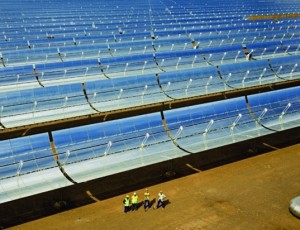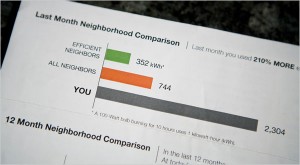Folks across the entire political spectrum concur the new election may blow a chilling wind across the cleantech industry (if you omit nukes). Budget-cutting is job #1 for this upcoming Congress, and the change of guard within key budget appropriation committees does not bode well for future government cleantech investments.
While all eyes are on cap-and-trade legis lation and how the House will act to block EPA climate rules, perhaps the better barometer of cleantech’s future is the continuation of ARPA-E (Advanced Research Projects Agency for Energy) funding.
lation and how the House will act to block EPA climate rules, perhaps the better barometer of cleantech’s future is the continuation of ARPA-E (Advanced Research Projects Agency for Energy) funding.
ARPA-E was created in 2008 with strong bipartisan support to reverse the nation’s falling position in global clean technology markets. What DARPA did for national defense, ARPA-E was to do for energy technologies, bridging the “gap between basic energy research and development/industrial innovation.”
But ARPA-E didn’t really get off the ground until the Obama administration, when Stimulus Bill funding filled its budget coffers. Since then, the agency has funded 37 cutting-edge projects from an initial pool of 3,600 applications. By most accounts, the program has been a strong success, as the New York Times points out:
Last week marked the anniversary of the first round of grants for the Department of Energy program, which is charged with finding game-changing energy research and awarding jolts of funding. Business leaders and other energy experts say ARPA-E not only has found such “breakthrough” projects, but has unleashed interest throughout the innovation chain – DOE, universities, corporations, startups and the financial world.
Beaupre client, SAGE Electrochromics, is one such example. In March it received $72 million in loan guarantees from the program to develop dynamic window glazing technologies that make buildings highly energy efficient. It has since broken ground on a new 300,000 square foot manufacturing facility in Minnesota that is bringing 160 new green jobs and 200 construction jobs.
But SAGE’s immediate impact is the exception within ARPA-E . Most projects probably won’t start yielding big results for at least five years. As the mid-term election showed, Americans are impatient. Congress already punted on funding ARPA-E for the current fiscal year, saying current Stimulus funds should be sufficient for now. Who knows what the lame duck Congress will do.
With a Teaparty-inflamed House itching to slash and burn budget expenditures anywhere they can find them, ARPA-E will be the bellwether by which America regains its advantage or falls farther behind the world in clean technology innovation, along with all the good jobs and good karma that comes with it. DARPA gave us the Internet. A short-sighted vote to chloroform ARPA-E could be an equally monumental loss.












